The taxi ride from Rabbit Shrine to Kiyomizu-dera Temple was about 20 minutes. It could be quicker if not for the traffic congestion near the temple. In fact, the taxi driver took a short cut through a residential area and dropped us off a nearby street. Otherwise, we could be stucked on the taxi much longer.
We then walked along Sannenzaka Path, an old Kyoto Street similar to Ninenzaka, towards Kiyomizu-dera Temple. The street was extremely crowded and it's a challenge to navigate through it.
The streets are lined with shops, many of which specialize in souvenirs or snacks.
At the end of the street, we arrived at Nio-mon (仁王門), the entrance of Kiyomizu-dera Temple.After purchasing the admission tickets, we were ready to enter the temple.
Situated atop a small mountain on the east side of Kyoto, Kiyomizu-dera Temple offers a commanding view of the city. We could see the Kyoto Tower from here.At this time, the leaves were just beginning to turn red. It was expected that the fall foliage will be at its peak in 2-3 weeks' time.
We then walked towards the main hall which houses Kiyomizudera's veranda, the most famous feature of the temple. The Main Hall in Kiyomizu-dera Temple, which stands on the steep cliff of Mt. Otowa, is a renowned wooden structure reconstructed in 1633.
Supported by traditional wooden Japanese construction, it stands 13 meters above the ground. The assembled pillars and rails work like a scaffolding and support the structure so firmly that it is highly earthquake-resistant even on its steep slope. The veranda is supported by 18 pillars made from 400-odd-year-old zelkovatrees, the largest of which is approximately 12 meters high and two meters in girth. These pillars are joined with a number of rails, which penetrate through each pillar and form joints to strengthen the overall structure without using a single nail.
Withstanding hundreds of disasters over the years, this traditional wooden structure continues to support the stage, which is always bustling with visitors. Having said that, when we looked at the crowd on the veranda, we were still a bit concern if the structure can really withstand the weight of the visitors. Haha.....
Situated at the base of the temple's main hall, Otowa Waterfall splits into three cascades. Visitors use special long-handled ladles to drink from one of the streams.
Following is the view from the bottom of the veranda. Really admire the "civil architect" of ancient Japan.
We continued to explore the rest of the temple ground before leaving this UNESCO World Heritage Site.
On our way out of the area, we visited some interesting shops and had an early dinner.
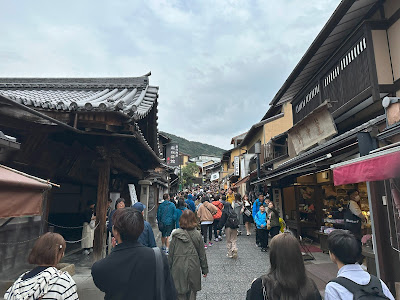







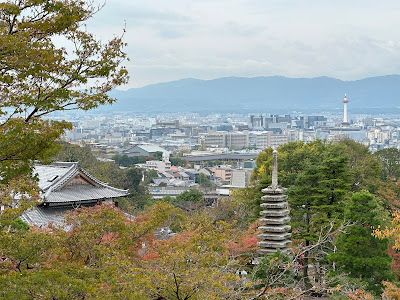










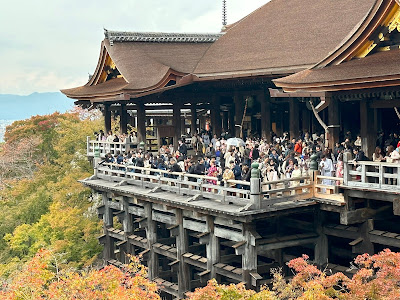


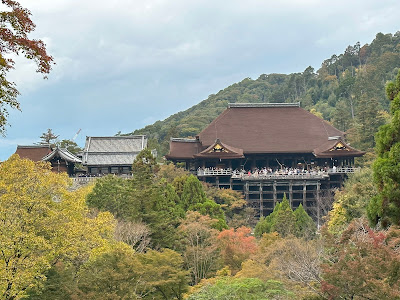





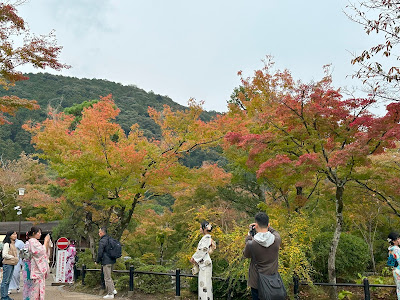


No comments:
Post a Comment